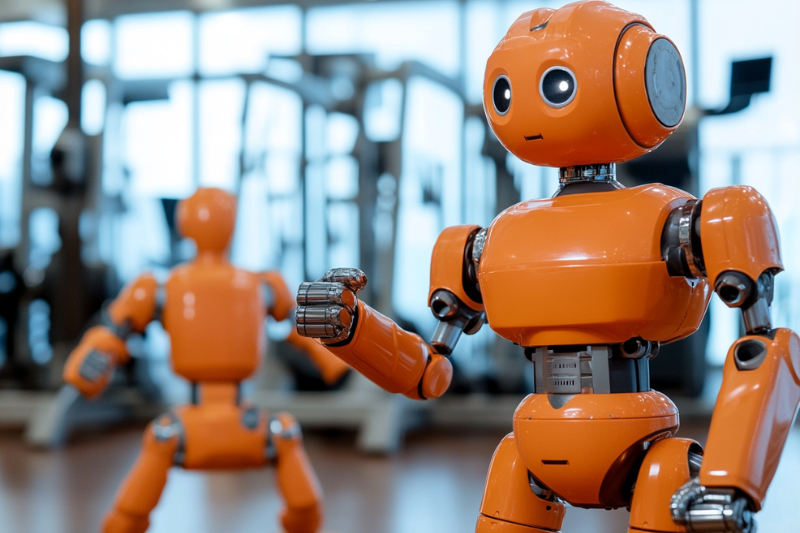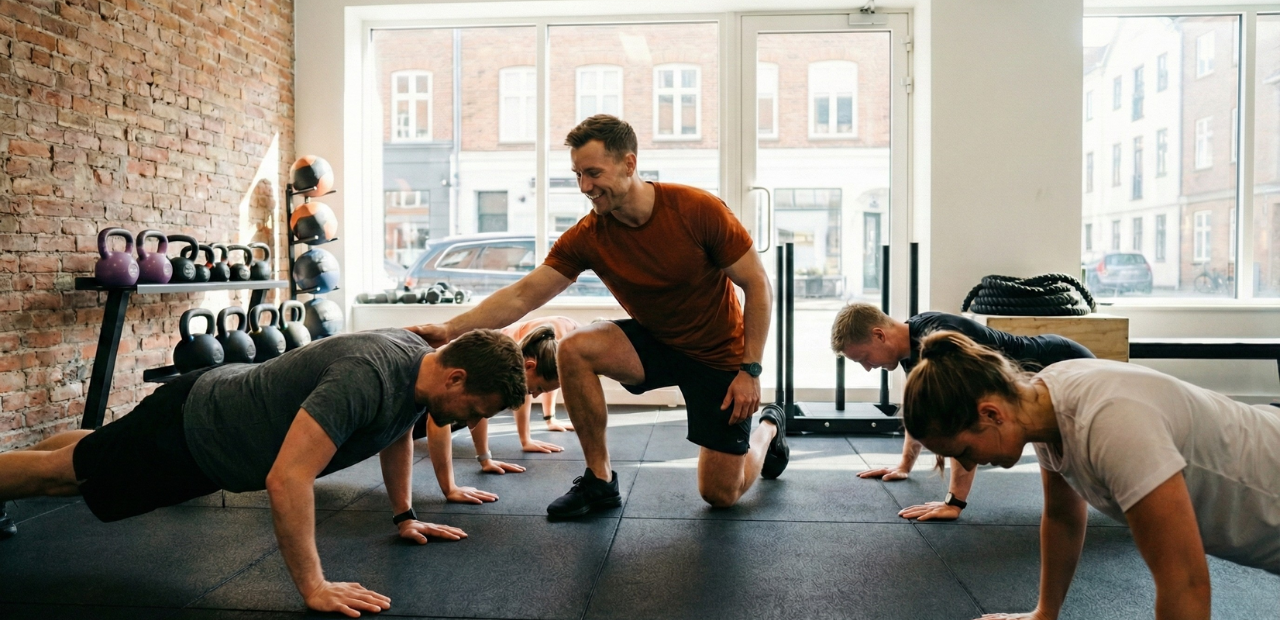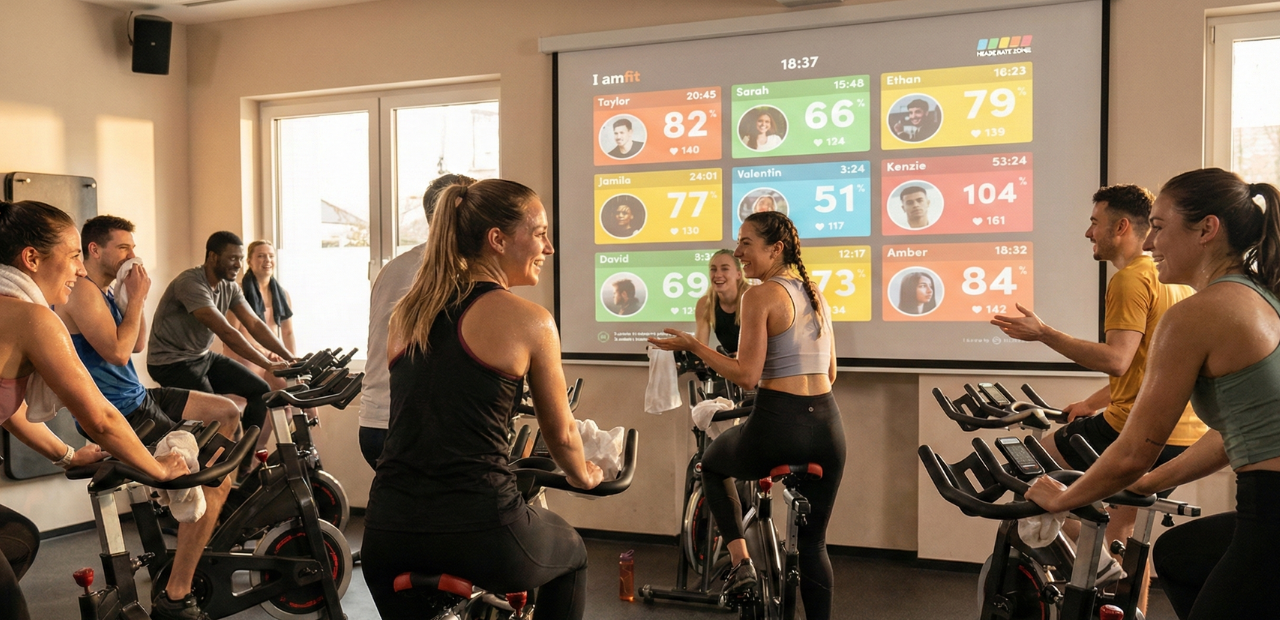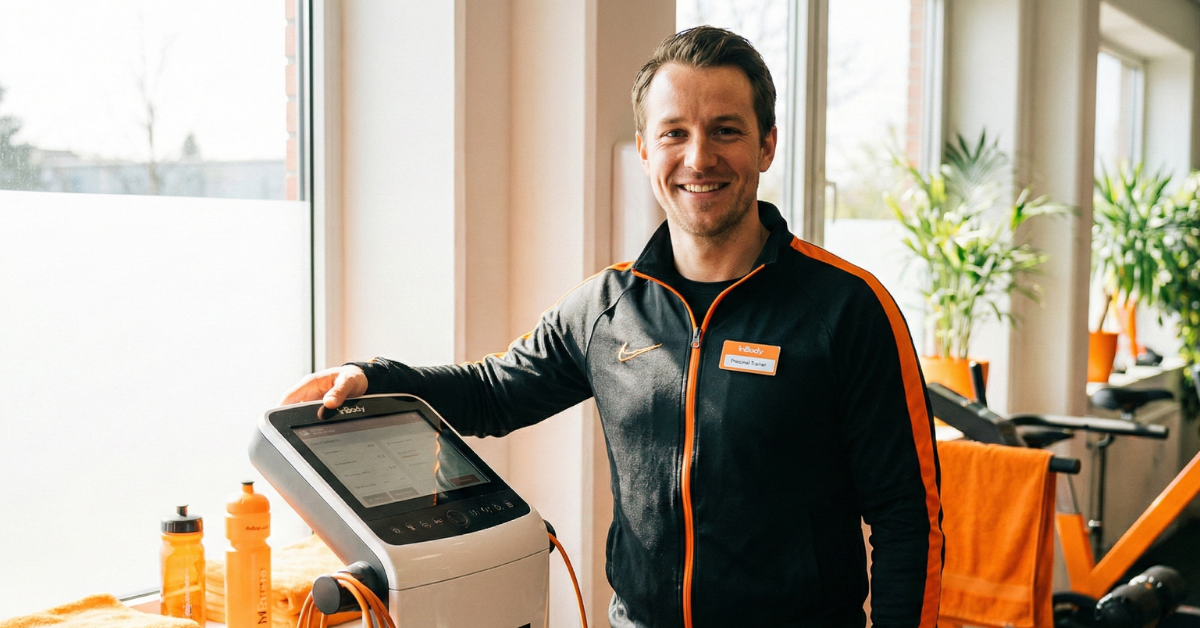Ever thought about how tech is slowly but surely changing the way we train our clients?
Gone are the days when personal training meant only a clipboard, a pen, and a stopwatch.
Nowadays, we’re stepping into a world where artificial intelligence is changing the game entirely.
You might be thinking, “AI? In personal training?!” But trust me, this isn’t just some techy trend that’ll disappear next year.
We’re talking about real tools that can make our lives as a personal trainer easier—and get our clients better results.
Think about being able to track every single rep, spot form issues before they turn into injuries, or adjust a workout in real-time based on your client’s energy level. AI’s got the potential to handle all that and more.
In this article, we’re going to look at how AI is reshaping the fitness industry and the way we approach coaching.
Personalized Training Plans and Adaptive Workouts

Let’s say you’re working with a client, and instead of guessing what might be best for them, AI does the heavy lifting (pun intended) by analyzing their fitness level, body composition, and specific goals.
It’s like having a digital assistant that can optimize personal training sessions by understanding your client’s body as well as they do.
AI Tools That Dig Deep into Data
With AI-powered tools, you can create customized workout plans that go beyond a one-size-fits-all approach.
These tools dive into data on a client’s fitness baseline, muscle distribution, and even their long-term goals.
So whether they’re aiming for strength, endurance, or weight loss, AI is there, ready to craft personalized workout routines based on real numbers, not just a best guess.
Real-Time Adjustments: Beyond Static Plans
Say your client shows up feeling a bit worn out, or maybe they’re having an unusually high-energy day.
AI can make real-time adjustments, modify intensity, and reps, or even suggest a shift in the workout routine to recovery exercises.
It’s like having an extra set of eyes on your client’s performance and mood every step of the way, helping you deliver a workout that adapts on the fly.
Popular Tools Making It Happen
There are already some standout fitness apps powered by AI in the game, like Freeletics which have built-in adaptive programming.
These tools track progress, adjust goals, and, over time, deliver training plans that get even more accurate.
They’re perfect for enhancing the tailored coaching you’re already providing, giving clients a seamless, highly personalized experience.
Real-Time Feedback and Form Correction

Ever wish you could be in two places at once, watching every move your client makes and giving them instant feedback, even when you’re not there? That’s where AI steps in like your tech-savvy assistant.
How AI Uses Computer Vision to Assess Movement Patterns
Think about an AI-powered software that analyzes every angle, bend, and twist in real-time.
With computer vision, AI “sees” your client’s movement patterns through their device’s camera or wearable sensors.
It’s like having a second pair of eyes, but these eyes never blink, miss a detail, or lose focus.
What does this mean for you?
You can now give clients real-time corrections as if you’re right there with them, even during their solo sessions.
No more guessing if they’re nailing that squat form or rounding their back during deadlifts.
The Role of AI in Preventing Injuries and Improving Posture
We know that incorrect form isn’t just bad for progress, it’s a fast track to injury.
AI steps in to spot posture mistakes, alignment issues, or risky movements and gives immediate feedback to fix them.
It’s like having an injury prevention tool built right into their workout.
The beauty here is AI’s ability to detect subtleties, like if a client’s knee is collapsing inward or their shoulder dips too low.
It’s catching things a busy human eye might miss in a virtual session.
Tools like BackAware Belt, which calibrates your spine for dynamic exercises, are helping trainers prevent injuries by improving real-time posture feedback.
And we both know, that the fewer injuries, the more consistent your clients stay, and the better they feel overall.
Tools and Wearables for Real-Time Form Correction
Now, what’s making all this possible? AI-powered tools and wearables.
We’re talking about devices like Tempo, which uses 3D sensors to give real-time feedback, and Magic AI Mirror, which can guide clients through over 400 exercises while providing holographic feedback.
These tools allow your clients to get form feedback on their own, enhancing their training sessions beyond what you provide in person.
Enhanced Data Tracking and Progress Monitoring

AI is making data tracking actually useful and, dare I say, easy.
Instead of scribbling down weights and reps on a whiteboard (or worse, trying to keep it all in your head), with the help of advanced AI tools, you can track data in real time.
Heart rate, calorie burn, sleep quality, you name it, all with zero effort on your end.
And here’s where it really gets exciting, progress monitoring.
Ever had a client who doesn’t “feel” like they’re making progress?
With AI, you’ve got detailed charts and insights showing exactly how far they’ve come, down to every squat, every step, every small victory.
No more arguing with the scale; this is about the full picture of progress, not just weight.
More and more platforms are enabling the creation of personalized training plans tailored to individual fitness goals and body types. These tools take a dynamic approach, continuously adjusting workouts based on past performance, ensuring that users keep improving and stay motivated.
But it doesn’t stop there. Some systems go even further by offering detailed data analysis, allowing trainers to evaluate every movement and rep. This helps pinpoint weaknesses and refine technique, leading to more effective and targeted training.
This level of precision was practically unheard of just a few years ago.
In other words, the data isn’t just there for the sake of numbers; it’s there to transform the way you train your clients, enabling you to make those small, targeted adjustments that lead to big results.
Virtual Training Assistants and 24/7 Coaching

Imagine this: It’s late at night, and your client suddenly feels a surge of motivation (or maybe just a dash of guilt after a big dinner) to ask a fitness question or check in about their goals.
With AI, they don’t have to wait for your office hours.
Virtual assistants have got them covered 24/7, delivering support, answering questions, and keeping clients engaged at any hour.
These AI-powered assistants are more than just chatbots; they’re transforming client relationships and boosting accountability in ways we hadn’t thought possible.
Platforms like Virtuagym are pushing this forward by giving trainers the tools to create personalized, automated interactions.
For example, Virtuagym’s AI Coach offers clients on-demand guidance tailored to their program, so they stay on track even without a real-time response.
It’s literally like having a virtual coach in their pocket, keeping them engaged, motivated, and supported.
Nutrition and Lifestyle Recommendations

Today’s AI tools are helping clients make smart choices on their own, tailoring nutrition plans, monitoring sleep, and even tracking stress levels.
Apps like MyFitnessPal, Noom and Virtuagym Nutrition App are at the forefront here, offering personalized meal recommendations, snack ideas, and reminders to keep clients consistent.
And then we have LifeSum, an AI-powered platform that’s all about balanced living. LifeSum goes beyond food logs and calorie counting by offering insights on hydration, mood, and even tailored lifestyle tips.
It’s like having a holistic wellness assistant who’s always encouraging clients to prioritize sleep, manage stress, and build long-term habits.
So, what’s the big deal? With AI stepping in to handle the details, clients aren’t left guessing. They’re making informed decisions based on real data, which translates to better results and fewer setbacks.
For trainers, this means more clients actually stick with their plans between sessions, making your coaching more impactful and the journey smoother.
AI is taking the guesswork out of the lifestyle side of things, leaving you free to focus on refining workouts and strategies – the stuff you’re best at.
Predictive Analytics and Injury Prevention
AI is crunching vast amounts of data, from workout intensity to biomechanics, to spot patterns that might lead to injuries.
By analyzing this historical data, AI can flag when a client is pushing too hard or moving in a way that could cause harm. This means you can adjust their program before they end up sidelined.
Take Kitman Labs, for example. They’re leveraging AI to analyze athlete data, helping coaches predict injuries and optimize training loads.
Similarly, Zebra Technologies uses player tracking to monitor movements and predict injury risks, especially in high-impact sports.
Also, check out how AI is being used in sports here.
Customized Recovery Plans
But it doesn’t stop at prevention. When injuries do occur, AI steps in to create customized workout plans and recovery protocols.
By considering factors like the client’s specific injury, fitness level, and even genetic markers, AI technology tailors rest and rehab plans that get them back on track efficiently.
For example, Athletica.ai, provides adaptive training plans that adjust based on real-time performance and recovery data, ensuring clients aren’t pushed beyond their limits.
Incorporating these AI tools into your training arsenal means you’re not just reacting to injuries—you’re staying a step ahead, keeping clients safe, motivated, and progressing steadily.
It’s like having a crystal ball for their fitness journey, but way more scientific.
The Future of AI in Personal Training
Let’s fast-forward to the not-so-distant future of personal training, where AI is taking on an even more sophisticated role, reshaping how personal trainers and clients connect, train, and transform.
Emerging Technologies
First, let’s talk about what’s on the horizon. AI advancements are moving faster than we can keep up with, and in personal training, this means the introduction of even more specialized, data-driven tools.
Imagine an AI that can analyze a client’s mood, predict motivation slumps, or even suggest a workout adjustment based on minor shifts in their performance data.
Companies are already building toward these kinds of “predictive coaching” features, allowing trainers to proactively support clients, not just react to their needs.
Soon, we may see AI-driven “smart” wearables that offer live recommendations for exercise form correction or suggest recovery strategies in real-time, based on movement patterns and energy output.
Integration with Virtual Reality (VR) and Augmented Reality (AR)
Now, here’s where it gets truly immersive. As AI joins forces with VR and AR, we’re looking at the possibility of personal training in fully virtual spaces.
Think about it – your clients could be lifting in a virtual mountain range, running alongside a digital coach, or boxing with an avatar that mirrors your coaching cues.
Companies like Holodia and Supernatural are already exploring these immersive fitness experiences, using VR to make personalized workouts feel more like an adventure than a chore.
And with AI adapting these experiences to each client’s progress, trainers could use VR and AR as high-tech tools to keep clients engaged, motivated, and even entertained during their sessions.
Ethical and Privacy Considerations
Of course, with all this data and technology, there are some real questions about ethics and privacy.
When clients share so much personal data, everything from body metrics to lifestyle choices, it’s crucial that trainers and tech providers prioritize their security.
As AI continues to develop, clients need to feel confident that their data is handled responsibly. For trainers, understanding privacy laws and how companies protect this data will be essential.
Platforms like Apple Health are already leading by example, integrating strong privacy protocols while collecting valuable fitness insights.
Conclusion
And there you have it. AI isn’t just a buzzword or a passing trend, it’s reshaping the fitness business and personal training from the ground up.
From personalized workout plans to 24/7 coaching support, AI is giving trainers like you the chance to offer clients something we couldn’t have imagined a few years ago: an experience that’s deeply personalized, responsive, and grounded in real data.
Sure, AI won’t replace the human connection that makes coaching so powerful, but it’s enhancing it in ways that make us better, more effective, and more in tune with our clients’ journeys.
So as you think about integrating AI into your practice, remember it’s not about reinventing your approach, it’s about taking what you already do well and amplifying it.
This is the future of personal training, and it’s right at your fingertips.




